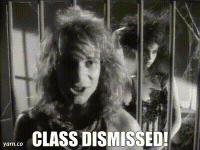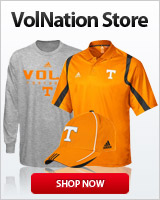volinbham
VN GURU
- Joined
- Oct 21, 2004
- Messages
- 69,961
- Likes
- 62,983
Rather than clutter up the threads I thought I'd give my extended take on why the Bud Light scenario was a predictable marketing failure.
This will be a multi-post review. It will be lectury at times since that's what I do for a living.
Part 1: Marketing Basics: Customer Perceptions, Branding and Positioning
A fundamental of applying Marketing is recognizing that customer perceptions are your reality. "The Customer is always Right" doesn't mean that customers are factually correct, reasonable, rational etc. It means they approach the exchange with their beliefs, perceptions, desires. If you want to do business with them you must recognize their perceptions and either 1) change them or 2) meet them. If you cannot do either the smart move is to seek customers you can match with. Just as customers choose providers, providers should choose customers. The problem arises when you don't understand their perceptions then can't understand why they didn't choose you.
Branding and Positioning are very closely related with Positioning being how customers view you relative to the competition (your position in the market) where as Branding is the entire collection of impressions, images, feelings etc that are conjured by the seeing/hearing the brand.
Positioning is important in differentiating against direct competitors. How is Bud Light different than Miller Lite? Than Budweiser? Than Sierra Nevada? Think Walmart and Target - two retailers that are miles more alike than different in approach to retailing and merchandise yet most people familiar with each see them as distinctly different. That is the power of positioning.
Branding is important in differentiating and decision making. A brand communicates the characteristics and consistency of a product so when I go to choose I don't have to do some long feature calculus. I see Taco Bell and I know exactly what I'm getting. They don't have to explain everything to me - just ring the bell, show the sign/logo and all that information is communicated.
So where is Bud Light positioned? A domestic light beer that is not heavy, is available everywhere and has been linked to fun, good times, downing brewskis. The Bud Light brand includes all those impressions plus the distinctive labeling, the link to AB and even Spuds MacKenzie if you're old enough.
Both branding and positioning are critical differentiators in markets with many competitors that don't have strong product differentiation. Bud Light isn't much different than almost any mass market domestic brew. My bet is most people drink it because it's an easy choice (the brand) and they aren't about having the best beer but rather having beer while they have a good time.
This will be a multi-post review. It will be lectury at times since that's what I do for a living.
Part 1: Marketing Basics: Customer Perceptions, Branding and Positioning
A fundamental of applying Marketing is recognizing that customer perceptions are your reality. "The Customer is always Right" doesn't mean that customers are factually correct, reasonable, rational etc. It means they approach the exchange with their beliefs, perceptions, desires. If you want to do business with them you must recognize their perceptions and either 1) change them or 2) meet them. If you cannot do either the smart move is to seek customers you can match with. Just as customers choose providers, providers should choose customers. The problem arises when you don't understand their perceptions then can't understand why they didn't choose you.
Branding and Positioning are very closely related with Positioning being how customers view you relative to the competition (your position in the market) where as Branding is the entire collection of impressions, images, feelings etc that are conjured by the seeing/hearing the brand.
Positioning is important in differentiating against direct competitors. How is Bud Light different than Miller Lite? Than Budweiser? Than Sierra Nevada? Think Walmart and Target - two retailers that are miles more alike than different in approach to retailing and merchandise yet most people familiar with each see them as distinctly different. That is the power of positioning.
Branding is important in differentiating and decision making. A brand communicates the characteristics and consistency of a product so when I go to choose I don't have to do some long feature calculus. I see Taco Bell and I know exactly what I'm getting. They don't have to explain everything to me - just ring the bell, show the sign/logo and all that information is communicated.
So where is Bud Light positioned? A domestic light beer that is not heavy, is available everywhere and has been linked to fun, good times, downing brewskis. The Bud Light brand includes all those impressions plus the distinctive labeling, the link to AB and even Spuds MacKenzie if you're old enough.
Both branding and positioning are critical differentiators in markets with many competitors that don't have strong product differentiation. Bud Light isn't much different than almost any mass market domestic brew. My bet is most people drink it because it's an easy choice (the brand) and they aren't about having the best beer but rather having beer while they have a good time.







